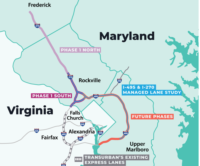New York City's Mayor Bill de Blasio (D) says the city is moving ahead with the implementation of its resiliency plan, based on the findings of a recently released report on climate change that predicts New York City's sea level could rise as much as 6 ft by 2100. Among city programs going forward are the $335-million Lower East Side integrated flood protection system and the estimated $100-million shoreline investment program to protect the most vulnerable waterfront communities.
The announcements come as a result of the Feb. 17 release of the New York City Panel on Climate Change's 2015 report, "Building the Knowledge Base for Climate Resiliency," which, for the first time, provides climate projections through 2100 for temperature, precipitation and sea-level rise.
The 150-page report also includes new coastal flood-risk maps; enhanced dynamic flood-inundation modeling of predicted coastal flooding; and a process for enhancing a system for city climate-resiliency indicators and monitoring.
Co-chaired by Cynthia Rosenzweig, senior research scientist at the NASA Goddard Institute for Space Studies and Columbia University's Earth Institute Center for Climate Systems Research, and Bill Solecki, professor of geography at Hunter College, City University of New York, the independent panel works with the mayor's offices of recovery and resiliency, sustainability and operations. The report's recommendations align with President Barack Obama's 2013 Executive Order 13656, Preparing the U.S. for the Impacts of Climate Change.
The city already has repaired bulkheads and rebuilt dunes and city beaches damaged by 2012's Superstorm Sandy. The electric utility Consolidated Edison has invested $1 billion to harden critical assets. The city also has updated building and zoning codes, including 16 local laws to improve residential and commercial-building resilience.





Post a comment to this article
Report Abusive Comment